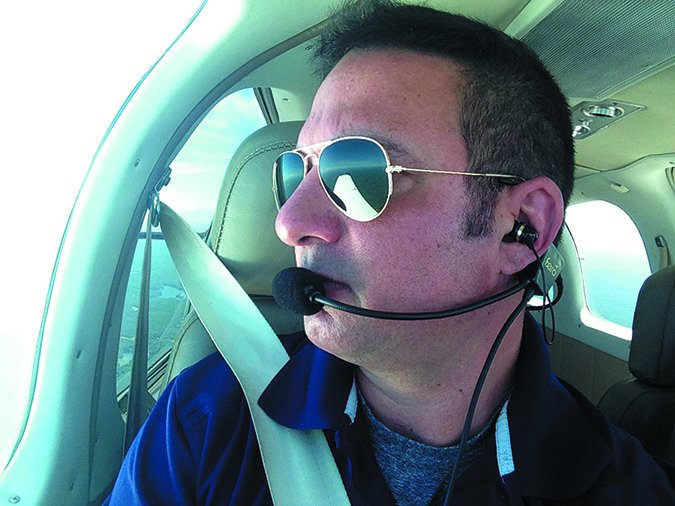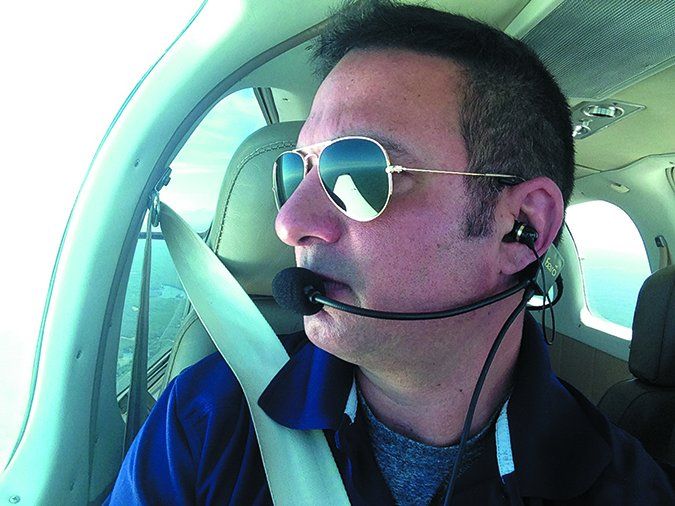In-Ear Headsets
I read with interest the Faro Air in-ear headset review in the August 2016 issue of Aviation Consumer. I thought I would share an experience with your readers.
I invested in a Clarity Aloft in-ear model a few years ago, but I returned the set after using it for 10 hours of flight time. My issue was ear discomfort, plus it offered fair noise reduction in the cabin of my Cirrus. I went back to my LightSpeed Zulu.
This year at AirVenture, Quiet Technologies caught my attention, so I got a demo of its $359 Halo in-ear model and bought one. Initially, the headset offered a good fit and promised to be quiet. When I started the engine, I immediately noticed low-frequency noise that isn’t present in my Lightspeed. I reserved judgement until two hours in cruise flight at 11,000 feet.
The low-frequency noise reduction seemed fair, at best, the set has an excellent microphone and the entertainment audio quality from my onboard satellite system was just mediocre. Even after repositioning the buds, my ears hurt.
My conclusion is they offer good comfort in hot cabins, are lightweight and stylish, have a good price point, but just aren’t up to ANR-like performance or comfort.
Ken Newman
via email

Your personal experience with the Halo and Clarity is solid proof that you just have to try them before buying them. This is true with any headset. Worth mentioning is that Quiet Technologies honors a 45-day return policy.
As for our Faro Air review, we need to disclose that the sample headset the company provided us was equipped with demonstration earbuds, which are slightly different than the ones it ships with regular orders. Faro shipped us replacement earbuds, we tried them and noted only marginally better noise reduction than we reported in the review.
BendixKing KX155 Support
I have owned a BendixKing KX165 navcomm radio for 16 years and replaced the display several times (at a cost of $250 to $400 per event).
According to BendixKing, it has depleted the inventory of gas discharge displays and replacements aren’t available.
The so-called fix is to modify the radio to accept a new LCD display, but at an astronomical price tag of over $2000.
There are 13 used KX165 radios on eBay and the average selling price is $1710, while the median is $1700. It seems this makes the repair exceed the value of the radio. These aren’t orphaned units like the Narco MK12D in my panel. You can buy a brand new KX165 for $5500 today.
In my view, this is lousy support for a great product. Not all of us in aviation are made of money.
Bob Reed
via email
We chased this issue and learned that the vendor that supplies the KX155/165 display is gone. A fix won’t be cheap, but you have the pricing wrong.
There are two options. The first is a field modification and replacement of the old gas discharge display with an LCD, or with an LED for the KX155A. The cost of the kit, which includes the display, a PC board and other small components is $1333. BendixKing told us the modification can be accomplished by a competent bench tech in a couple of hours. The new displays should last a long time.
This situation prompted BendixKing to create a KX155/165 factory refurbishment program. For $1750, you get a new display, a new bezel, knobs, display lenses and a one-year warranty.
More Thoughts on the Icon A5
I’ve been reading your recent Icon A5 coverage and think the aircraft is very appealing. There are some potential issues that might be important to anyone with the resources to afford a $300,000 recreational aircraft.
Can you give some examples of circumstances under which the owner might be obligated to indemnify Icon should it lose a lawsuit following an accident? Without liability insurance to protect the owner or operator, only exceptionally motivated individuals might be willing to accept unlimited financial responsibility for potential actions against the company.
Additionally, a common accident for amphibious aircraft is landing with the gear down while on water, with sometimes fatal consequences. Has Icon tested or simulated a gear-down water landing? It’s going to happen in the real world.
Charles Curtis
via email
In its current revision, the Icon A5 purchase agreement sets out circumstances under which the owner may be required to indemnify Icon in the event of a lawsuit. Buyers should read it carefully.
As for water-landing mishaps, Icon didn’t say whether gear-down landings on water were part of the test program for the A5. Moreover, we are not aware of any aircraft manufacturer that does gear-down water landing tests.


